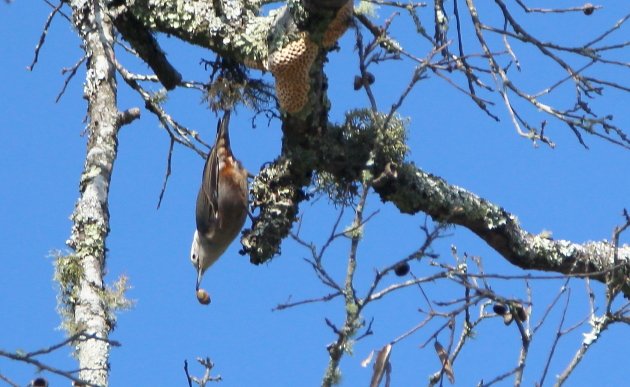
I suppose that every birder knows the impossibility of explaining to non-birders that our hobby can actually be exciting. You hear a call you do not recognize, and your heart starts to race. Could it be? Where is it? Can I find it? I can!! A Red-breasted Chat!!! And yet, the non-birder’s eyes started glazing over at the mere mention of the bird’s call.
Still, in spite of the thrill we share with each lifer, that is not the rush of blood to the head to which I refer in my title. Rather, I am speaking of what a certain group of birds must experience every day. These are the few species who prefer to spend their lives hanging upside-down.
We each have reasons to give special love to certain species. Of course, birds that are rare, new, or especially beautiful are beloved by most birders. Birds of prey, and birds with unusual abilities, such as hummingbirds, are also easy to love. But I imagine that birds that amuse us also hold a special place in the hearts of most birders. And those species that like to hang upside-down definitely amuse me.
Here in central Mexico, the masters of inverse perching are the Nuthatches, and the winter-only Black-and-White Warbler. I can see the adorable Pygmy Nuthatch by going to the pine forests around Mexico City, but in my home state of Michoacán, the White-breasted Nuthatch is the only one I have seen.
Fortunately, the White-breasted Nuthatch is easy to see and hear, if you know where to look. My easiest site for this species is the park known as Kilómetro 23, which is actually only about 21 kilometers from my home. On the weekend, this park is packed with Morelia natives renting horses and barbecuing beef. But early Monday morning, it’s just me, the Nuthatches, and a good number of other birds. Sometimes, the White-breasted Nuthatch perches like all those other birds:
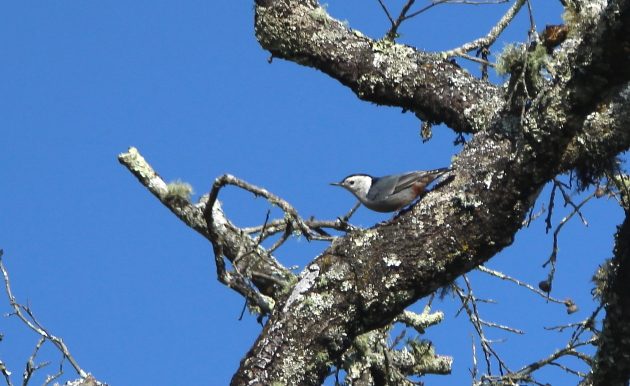
But most of the time, their positions range from the improbable to the seemingly impossible:
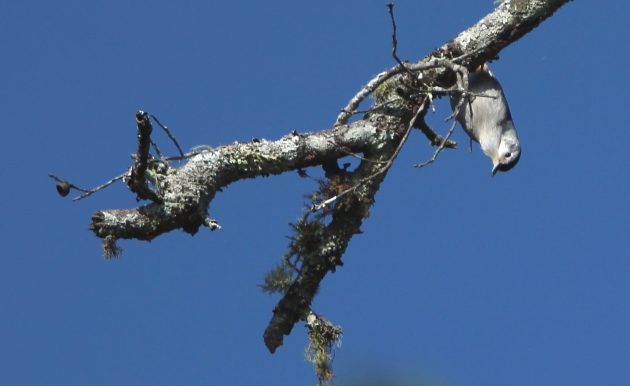
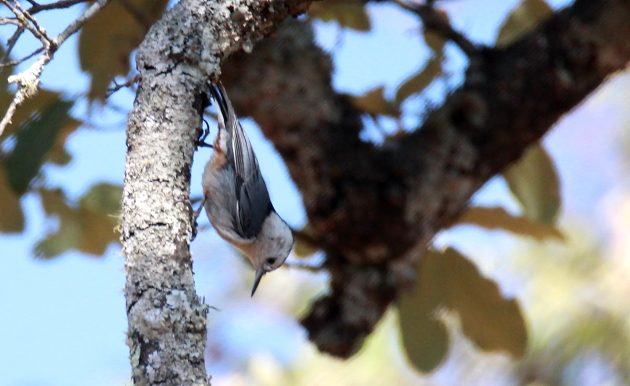
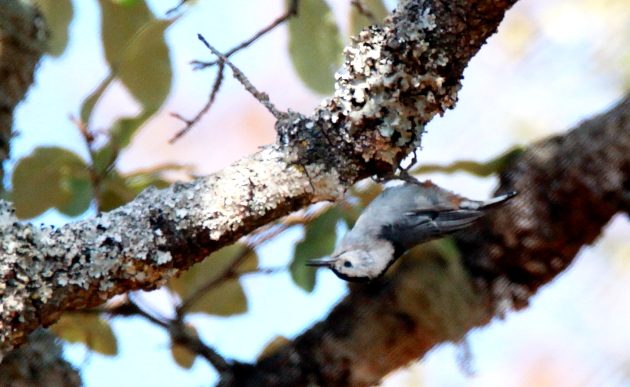
Of course, Nuthatches are supposed to habitually use these positions. But the Black-and-white Warbler has to break ranks with its Warbler kin to get its regular head-rushes.
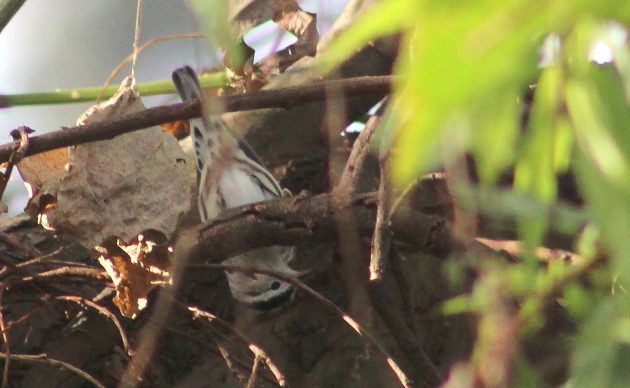
Not to mention that dapper plumage in shades of, well, black and white:
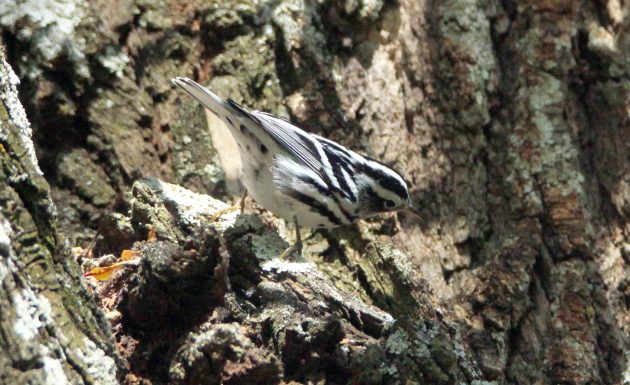
Rock on, my feathered head-rushing friends!











Leave a Comment